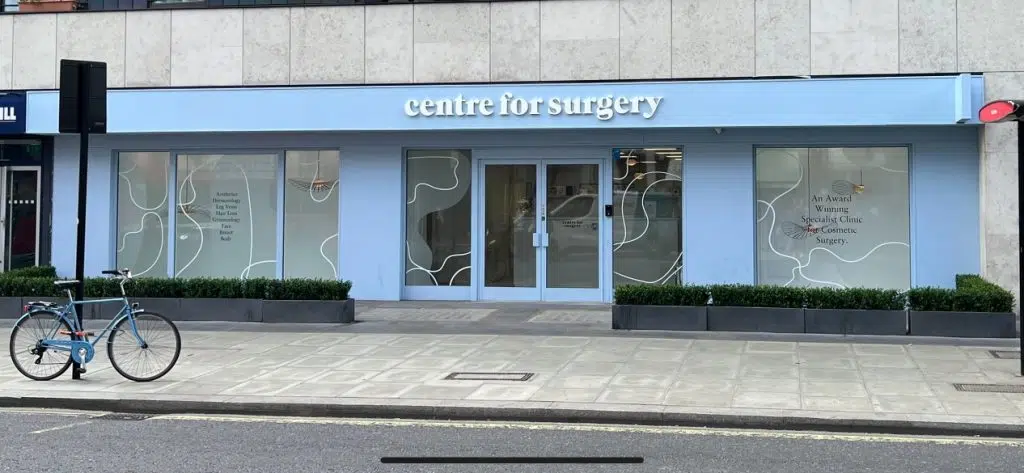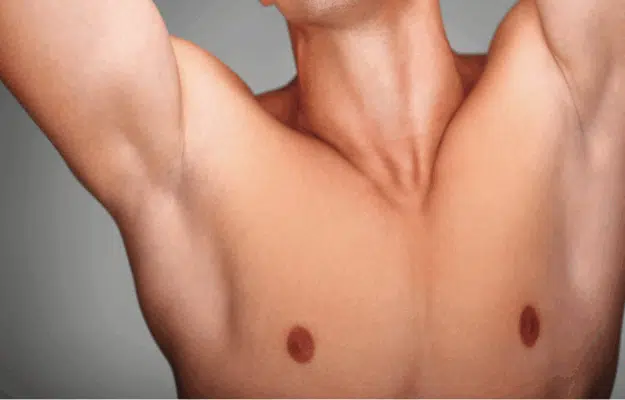It is generally thought that between 30 to 60% of men have some type of gynecomastia which is also known as male breast enlargement or “man boobs”. Many people may be surprised at how common the condition is, although it can cause men significant distress, leading to a reduction in self-confidence.
RELATED: What is gynecomastia?
There are several causes of gynecomastia, and in some instances, the condition may have no clear cause. There are several recognised causes of gynecomastia, the most common of which is a hormonal imbalance that involves the overproduction of oestrogen and which results in an overproduction of breast tissue.
Gynecomastia is very common during puberty, which can affect up to 30% of adolescents, and this is most often due to the significant hormonal changes that occur during this period. Gynecomastia, which typically develops during puberty, usually resolves completely once the hormonal imbalance is corrected; however, in a small number of cases, it may persist. Gynecomastia occurs across all age groups and becomes particularly prevalent in men who are aged over 50, which is when hormonal changes start to retake place.
Gynecomastia occurs most commonly in certain age groups, such as adolescents and those over 50, but it can also develop at any age. Gynecomastia can occur regardless of whether someone is slim or overweight, younger or older. We commonly see very fit men who engage in regular bodybuilding and exhibit varying degrees of gynecomastia.
Can exercise prevent gynecomastia?
Gynecomastia is a frequently misunderstood condition, and many people think that exercise can prevent or even cure gynecomastia. The answer to this is no; we see many men in fantastic shape who still have gynecomastia, including professional athletes and bodybuilders.
Another false idea is that exercise can lead to gynecomastia. In some men, the condition of gynecomastia can often resemble a highly developed chest musculature, which leads many people to think that excessive exercise or bodybuilding can result in the formation of excess male breast tissue.
With men who have excess breast tissue or enlarged male breasts, it should be remembered that this is not due to increased muscle bulk but is actually due to either an excess of fatty tissue or excessive glandular tissue and, most commonly, is a combination of both. Having dealt with the misconception that exercise causes gynecomastia, it is vital to bear in mind that recreational substances such as anabolic steroids can cause gynecomastia, so we would always recommend that all men avoid these substances and build muscle mass through natural means at the gym.
Exercise will not lead to a reduction in male breast enlargement, and it does not matter whether you exercise every day and eat very sensibly; excess glandular tissue will remain. Excessive glandular tissue will not decrease with exercise. However, men with excessive body fat on the chest wall may see a significant improvement with exercise. The only way to correct gynecomastia caused by glandular enlargement is through surgical removal of the excess tissue.
Some men may attempt vigorous regular exercise as a potential solution to treating existing gynecomastia. However, this often leads to increased muscle bulk in the chest, which accentuates the appearance of gynecomastia. This can be a significant source of disappointment for many men to find that attempting a potential treatment only leads to worsening the appearance of their gynecomastia.
RELATED: How to get rid of gynecomastia
Male breast reduction surgery for the treatment of gynecomastia
Regardless of how physically fit you may be, the condition of gynaecomastia can lead to a lot of mental anguish for many men, which leads to a significant reduction in self-confidence. This may affect the types of clothes men may wear, particularly at the beach, where they may avoid removing their T-shirts. The condition may also affect personal relationships. Fortunately, there is an excellent treatment in the form of surgery, which is minimally invasive in nature and can be carried out as a day case at Centre for Surgery in London.
RELATED: Is gynecomastia surgery worth it?
Our surgeons carry out many gynecomastia procedures each year and have refined their techniques over time to reduce the amount of scarring. In some cases of gynecomastia, our surgeons can make a very tiny incision on the outer part of the chest, so you will have virtually no scarring.
The actual type of treatment to be carried out depends on whether men have an excess of glandular tissue or an excess of fatty tissue. In situations where men have an excess of both, then a combination of liposuction and surgical excision is the best treatment. The first part of the procedure involves liposuction to remove the fat and contour the chest, followed by a small incision around the areola ,which permits access to surgically remove the excess glandular tissue. In severe cases of gynecomastia resulting in excess skin, your surgeon may remove redundant skin with techniques similar to an areola reduction to tighten the chest and combine this with BodyTite radiofrequency skin tightening.
RELATED: What do gynecomastia scars look like?
The male breast reduction procedure takes between one to 2 hours to carry out and is most commonly performed under general anaesthetic. However, it can also be carried out under local anaesthetic for milder degrees of gynecomastia. We recommend that patients take one week off work and avoid any exercise or bodybuilding for a minimum of six weeks after the procedure.
RELATED: Can gynecomastia come back after surgery?
Gynecomastia Surgery at Centre for Surgery
If you think you may have gynecomastia, the best way to determine this would be to have a face-to-face consultation with one of our specialist plastic surgeons, who have years of experience in treating all types of gynecomastia. The specific type of gynaecomastia you have can only be properly assessed through a thorough physical examination combined with a comprehensive medical history, which can then provide an idea of the treatment options available for your condition, as every man is unique.
If gynecomastia is something that has been bothering you for some time, we recommend you give us a call and speak to one of our friendly and knowledgeable patient coordinators, who will be able to book you to see an expert plastic surgeon in London for treatment of “man boobs”.










